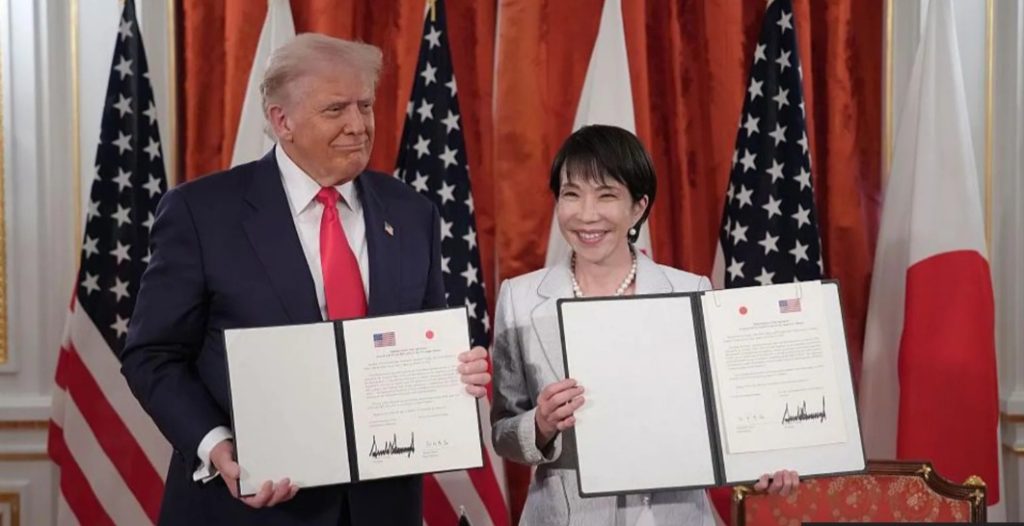
Crystal Dike
Praise, pledges, and pageantry marked the end of U.S. President Donald Trump’s visit to Japan on Tuesday, as newly elected Japanese Prime Minister Sanae Takaichi rolled out a red carpet welcome and sealed key trade and defence agreements with Washington.
The two leaders signed a deal on rare earth minerals and issued a joint declaration heralding a “golden age” of U.S.-Japan relations. The agreement reaffirmed earlier commitments, including the 15% tariff deal negotiated earlier this year.
President Trump, who arrived from Malaysia on Tuesday as part of his week-long Asia tour, received a full military guard of honour at Tokyo’s ornate Akasaka Palace. Over lunch, he congratulated Takaichi for becoming Japan’s first female prime minister. The White House said the meal featured “American rice and American beef made with Japanese ingredients” — a symbolic nod to Trump’s long-standing demand that Japan import U.S. agricultural products.
Later, aboard the U.S. aircraft carrier USS George Washington, both leaders addressed thousands of American troops. Takaichi hailed the U.S.-Japan partnership as “the greatest alliance in the world” and pledged to increase defence spending — a move likely to please Trump, who has previously criticised Japan’s defence contributions.
During their talks, Trump expressed confidence in his relationship with Takaichi, noting her close ties to late Prime Minister Shinzo Abe, whom he called “a great friend.” He described Takaichi as a “close friend” and announced approval for Japan’s first delivery of U.S. missiles for F-35 fighter jets, expected later this week.
In a symbolic gesture, Takaichi presented Trump with golf memorabilia, including a signed bag from Hideki Matsuyama and a putter once used by Abe. She also announced that Japan would nominate Trump for the Nobel Peace Prize, praising his role in promoting peace in the Middle East.
Behind the celebrations, however, Tokyo faces mounting economic pressure. During the working lunch, Takaichi showed Trump a map of Japanese investments in the U.S., while Trump highlighted Toyota’s plan to invest $10 billion in new American plants. Yet he also pushed for greater access to Japan’s markets — including rice, soybeans, and automobiles.
Japan, which relies heavily on exports, remains cautious about reigniting tariff disputes. The country’s powerful farming lobby and auto industry — already hit by earlier 24% tariffs — remain key domestic concerns.
Analysts say Takaichi’s challenge will be balancing Japan’s strategic alliance with Washington against its vital economic ties with China. Former Abe adviser Tomohiko Taniguchi noted that she must be “straightforward about Japan’s national interests,” while Rintaro Nishimura of The Asia Group warned that she would need to “walk a fine line” between her hawkish views and regional diplomacy.
President Trump is expected to leave Japan for South Korea on Wednesday, before heading to a scheduled meeting with Chinese President Xi Jinping on Thursday.
